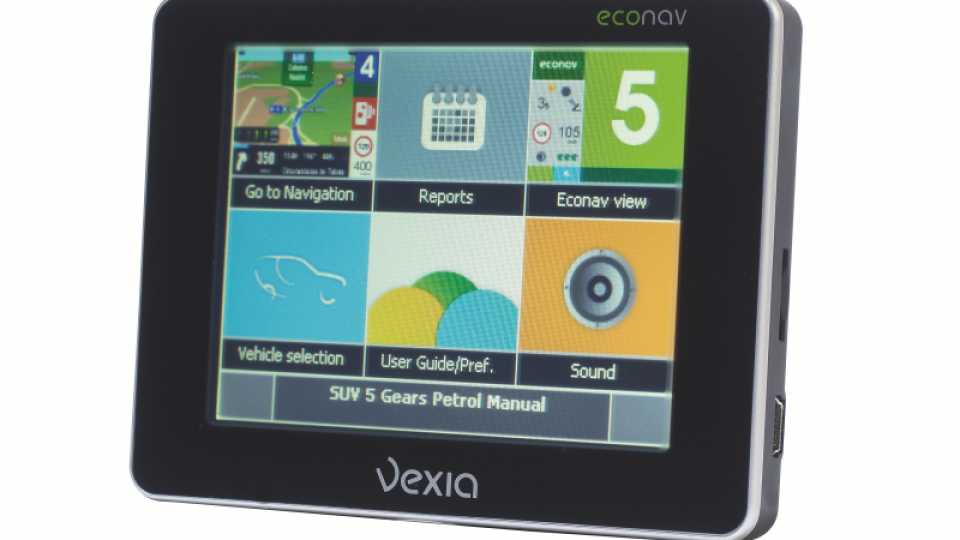We first saw the econav five months ago, but it's only now that we've been able to get a unit to test properly. Vexia is a Spanish company, and its only product is the econav, a standalone satnav which - apart from getting you from A to B safely - aims to save fuel (and reduce CO2 emissions) along the way.
There are two models: the 380, with a 3.5in screen, and the 480 with a larger 4.3in screen. Both are available with either UK and Ireland or European maps. They all work in exactly the same way as a normal satnav, but have databases of over 9,000 popular vehicle models between 2001 and 2009 in their internal memory. When you first switch the device on, it asks you to select your make and precise model, although you can enter a custom model if your car's not listed. When driving, your car information is used by the econav to advise you when to change gear (it achieves this by using GPS to monitor your current speed). It will recommend a following distance in yards or seconds (to avoid sharp braking) and warn you if you're braking or accelerating too hard.
Econav Reports let you see how much fuel you've saved over time. We're not convinced this is much use unless you commute, as comparing different routes at different times of day is not particularly relevant.
Beyond the 'eco' features, you get lane guidance, text to speech for reading out road numbers, safety camera locations, road speed warnings, plus bike and pedestrian modes. There's also a world clock, calculator and unit converter plus an ambient light sensor to automatically adjust screen brightness. We found the latter unreliable, constantly changing brightness for no apparent reason.
The econav's menus are reasonably easy to navigate, but only once you've enabled audible feedback which lets you know your taps have been registered. Otherwise, you tend to tap twice as the unit is often slow to respond. We particularly liked the postcode entry screen, which disables irrelevant keys on the keyboard, and automatically switches to numbers and back to letters as you type - other satnav manufacturers ought to take note of this thoughtful feature. However, Vexia should have used the same method to enter a departure location when you want to plan a journey in advance. Instead, you get a world map which is inexplicably zoomed in on Iceland, and you have to navigate manually to your chosen UK location.
The driving view is reasonably clear, and auto-zooms in when you approach a junction. You can choose to see the 'eco' information in a sidebar or full screen. In the latter mode, the gear indicator occupies most of the screen, with the current speed limit, safety camera, braking and acceleration warnings in smaller icons on the left. A bar below the gear indicator shows how economically you're driving, turning green when you are, orange when you're doing ok, and red when you're not.
The English male voice is exceptionally clear, and instructions are the most detailed and natural we've heard from any satnav. Routing is also sensible, and took the best routes for journeys we already knew well. We liked the option to show full sign boards, which accurately replicated road signs - handy if you missed the real sign while driving. Our only gripe is that there's no easy way to adjust the volume from the driving or econav view.
Overall, though, we found it hard to like the econav. It isn't as well built as a TomTom, and some Anglicisation is poor. It won't magically extract extra miles per gallon from your car; you can achieve the optimum fuel efficiency simply by accelerating and braking gently, and by being in the highest gear possible for the road conditions. At £180, it's also fairly expensive given that it doesn't include European maps or any traffic information (the model with European maps costs an extra £30).

